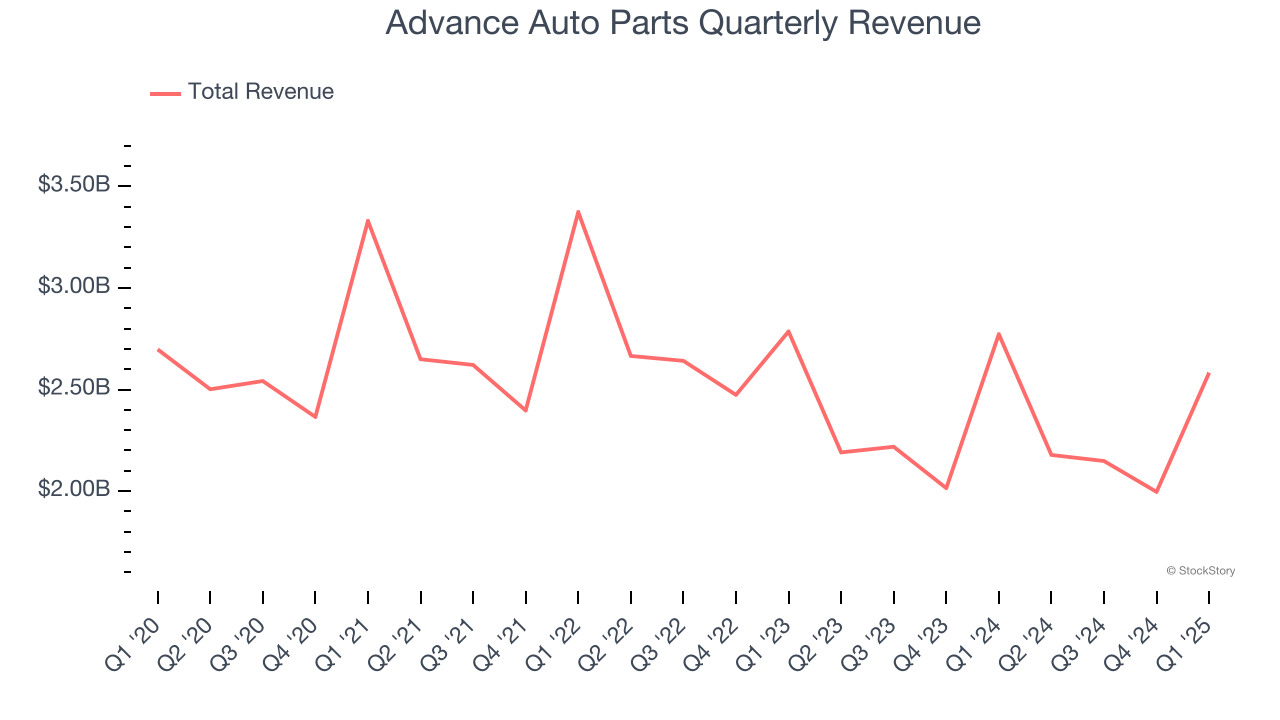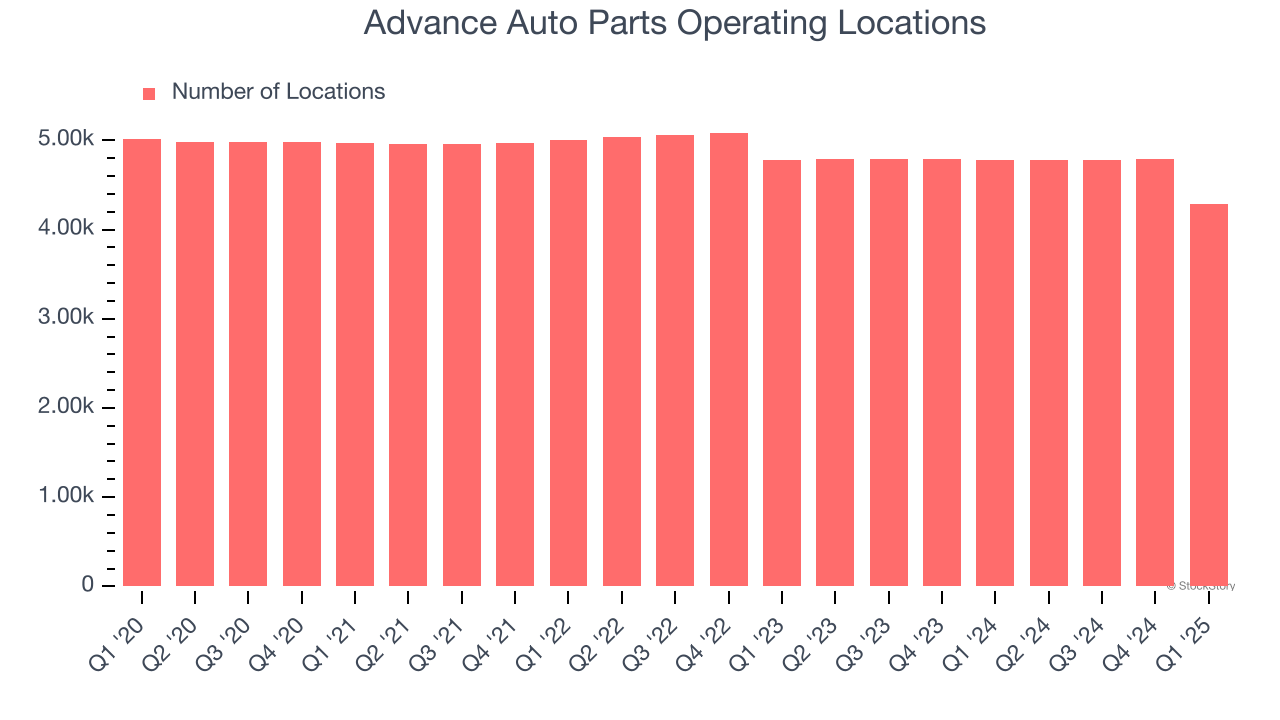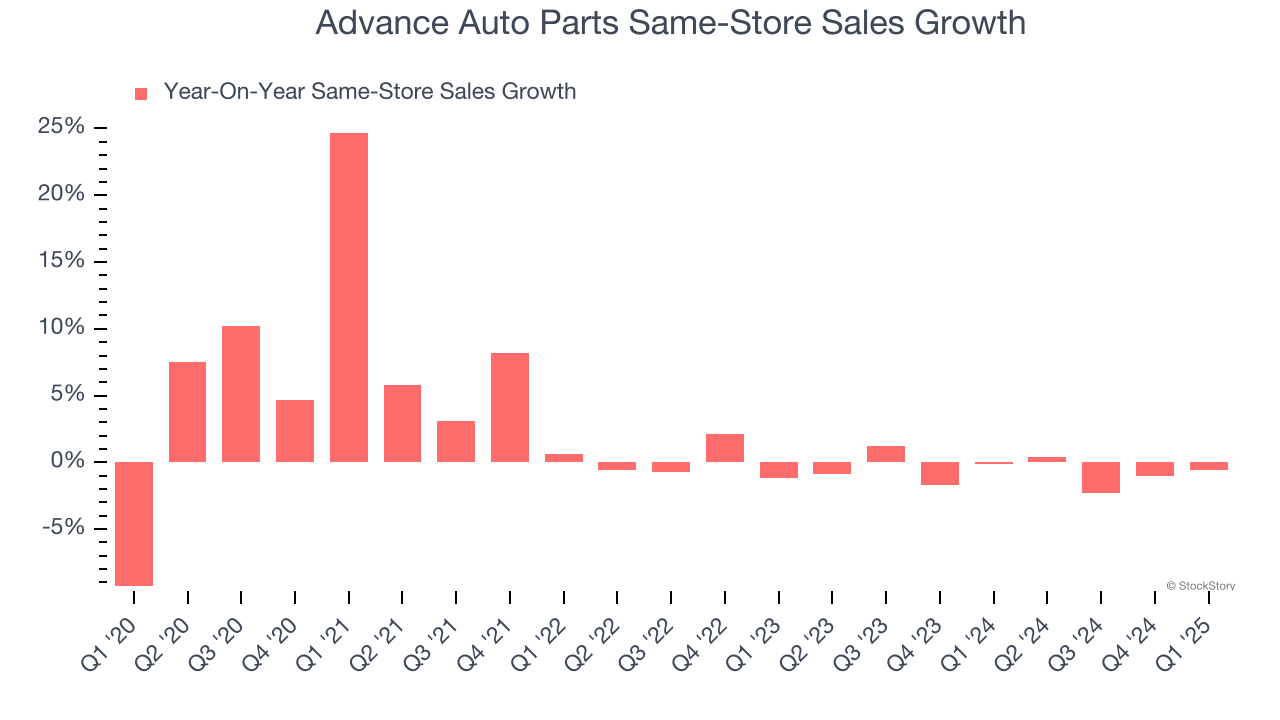
Auto parts and accessories retailer Advance Auto Parts (NYSE:AAP) reported Q1 CY2025 results topping the market’s revenue expectations, but sales fell by 6.8% year on year to $2.58 billion. The company expects the full year’s revenue to be around $8.5 billion, close to analysts’ estimates. Its non-GAAP loss of $0.22 per share was 68% above analysts’ consensus estimates.
Is now the time to buy Advance Auto Parts? Find out by accessing our full research report, it’s free.
Advance Auto Parts (AAP) Q1 CY2025 Highlights:
- Revenue: $2.58 billion vs analyst estimates of $2.50 billion (6.8% year-on-year decline, 3.2% beat)
- Adjusted EPS: -$0.22 vs analyst estimates of -$0.69 (68% beat)
- The company reconfirmed its revenue guidance for the full year of $8.5 billion at the midpoint
- Management reiterated its full-year Adjusted EPS guidance of $2 at the midpoint
- Operating Margin: -5.1%, down from 1.9% in the same quarter last year
- Free Cash Flow was -$198 million compared to -$46.27 million in the same quarter last year
- Locations: 4,285 at quarter end, down from 4,777 in the same quarter last year
- Same-Store Sales were flat year on year, in line with the same quarter last year
- Market Capitalization: $1.87 billion
Company Overview
Founded in Virginia in 1932, Advance Auto Parts (NYSE:AAP) is an auto parts and accessories retailer that sells everything from carburetors to motor oil to car floor mats.
Sales Growth
Reviewing a company’s long-term sales performance reveals insights into its quality. Any business can have short-term success, but a top-tier one grows for years.
With $8.90 billion in revenue over the past 12 months, Advance Auto Parts is a mid-sized retailer, which sometimes brings disadvantages compared to larger competitors benefiting from better economies of scale.
As you can see below, Advance Auto Parts struggled to generate demand over the last six years (we compare to 2019 to normalize for COVID-19 impacts). Its sales dropped by 1.3% annually as it closed stores.

This quarter, Advance Auto Parts’s revenue fell by 6.8% year on year to $2.58 billion but beat Wall Street’s estimates by 3.2%.
Looking ahead, sell-side analysts expect revenue to decline by 4.6% over the next 12 months, a deceleration versus the last six years. This projection doesn't excite us and suggests its products will face some demand challenges.
Software is eating the world and there is virtually no industry left that has been untouched by it. That drives increasing demand for tools helping software developers do their jobs, whether it be monitoring critical cloud infrastructure, integrating audio and video functionality, or ensuring smooth content streaming. Click here to access a free report on our 3 favorite stocks to play this generational megatrend.
Store Performance
Number of Stores
A retailer’s store count often determines how much revenue it can generate.
Advance Auto Parts operated 4,285 locations in the latest quarter. Over the last two years, the company has generally closed its stores, averaging 3.4% annual declines.
When a retailer shutters stores, it usually means that brick-and-mortar demand is less than supply, and it is responding by closing underperforming locations to improve profitability.

Same-Store Sales
The change in a company's store base only tells one side of the story. The other is the performance of its existing locations and e-commerce sales, which informs management teams whether they should expand or downsize their physical footprints. Same-store sales provides a deeper understanding of this issue because it measures organic growth at brick-and-mortar shops for at least a year.
Advance Auto Parts’s demand within its existing locations has barely increased over the last two years as its same-store sales were flat. This performance isn’t ideal, and Advance Auto Parts is attempting to boost same-store sales by closing stores (fewer locations sometimes lead to higher same-store sales).

In the latest quarter, Advance Auto Parts’s year on year same-store sales were flat. This performance was more or less in line with its historical levels.
Key Takeaways from Advance Auto Parts’s Q1 Results
We were impressed by how significantly Advance Auto Parts blew past analysts’ EPS expectations this quarter. We were also glad its full-year EPS guidance trumped Wall Street’s estimates. Overall, we think this was a very solid quarter with some key areas of upside, especially amid fears of economic weakness and tariff headwinds. The stock traded up 22.3% to $38.25 immediately following the results.
Advance Auto Parts had an encouraging quarter, but one earnings result doesn’t necessarily make the stock a buy. Let’s see if this is a good investment. When making that decision, it’s important to consider its valuation, business qualities, as well as what has happened in the latest quarter. We cover that in our actionable full research report which you can read here, it’s free.
